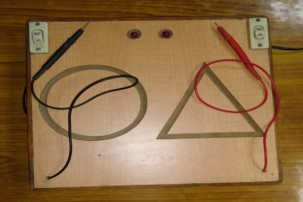Survey and intervention study to evaluate the efficacy of Ayurvedic formulation and Shirodhara in Attention Deficit Hyperactivity Disorder
DOI:
https://doi.org/10.21760/jaims.8.9.11Keywords:
Attention Deficit Hyperactivity Disorder (ADHD), Inattention, Hyperactivity, Impulsivity, ShirodharaAbstract
Attention deficit hyperactivity disorder (ADHD) is a mental disorder of the neuro-developmental type. The core symptoms of ADHD are inattention, hyperactivity, and impulsivity. It is one of the most common and most extensively studied behavioral disorders in school-age children. In this study and Ayurvedic formulation ‘Tab. Eleva’, showed extremely significant improvement in Inattention, Hyperactivity, and Impulsivity as well as on the Diagnostic and Statistical Manual of Mental Disorder IV edition (DSM–IV) criteria. However, Shirodhara also shows statistically significant improvement in Inattention, Hyperactivity, and Impulsivity but the percentage of relief is less than the Ayurveda formulation. The survey study, conducted with a sample size of 1000 cases, revealed that the prevalence of ADHD among males was 34.35%, while in females it was 10.64%, within the age range of 6-12 years.
Downloads
References
A Parthasarathy, IAP Text Book of Pediatrics 6th edition publish by Jaypee Brothers Medical Publishers (P) Ltd. pg no. 471
Robert M. Kliegman [et al.], Nelson textbook of pediatrics. 19th ed. pg no. 108
A Parthasarathy, IAP Textbook of Pediatrics, 4th edition, © 2009, Indian Academy of Pediatrics pg 200
Shrinidhi. K. Acharya. Acharya’s Text book of Kaumarabhritya publish from Chaukhambha Orientalia, Vol 2, Page no. 1061
Vashisth Sunil, Therapeutic Handbook by Dr. Brijbala Vashisth (MD, ayu) and Dr. Sunil Vashisth.
Jyothsna Akam Venkata et. al., Prevalance of Attention Deficit Hyperactivity Disorder in Primary School Children, Indian J Psychiatry, 2013 oct-dec, 55(4)
Ramya HS et. al, Prevalence of Attention Deficit Hyperactivity Disorder in school going children aged between 5-12 years in Bengaluru, Curr Pediatr Res 2017: 21(2):321-326.
Hae Dong Woo et. al. Dietary pattern in children with Attention Deficit/ Hyperactivity Disorder, Nutrients. 2014 Apr; 6(4)
Berger I, et. al. Attention Deficit Hyperactivity Disorder (ADHD) and Birth Order, J Child Neurol. 2009
Zheng Chang et. al. Maternal age at child birth and risk for ADHD in offspring: a population-based cohort study, Int J Epidemiol. 2014 Dec; 43(6): 1815-1824
Biederman J. Attention deficit hyperactivity disorder. Ann Clin Psych 1991;3:9–22.
Chawla PL, Sahasi G, Sundaram KR, Mehta M. A study of prevalence and pattern of hyperactive syndrome in primary school children. Indian J Psych 1981;23:313–22.
Robert Winston et. al., The importance of early bonding on the long-term mental health and resilience of children, London J Prim Care. 2016; 8(1), PMCID: PMC5330336.
Viana Di prisco et.al., Theta-rhythmically firing neurons in the anterior thalamus: implications for mnemonic functions of Papez's circuit, Neuroscience. 2001;104(3):619-25.
Guyton & Hall, 2006
Kajaria Divya et al.: An Appraisal of the Mechanism of Action of Shirodhara, Ann Ayurvedic Med. 2013; 2(3): 114-117.















